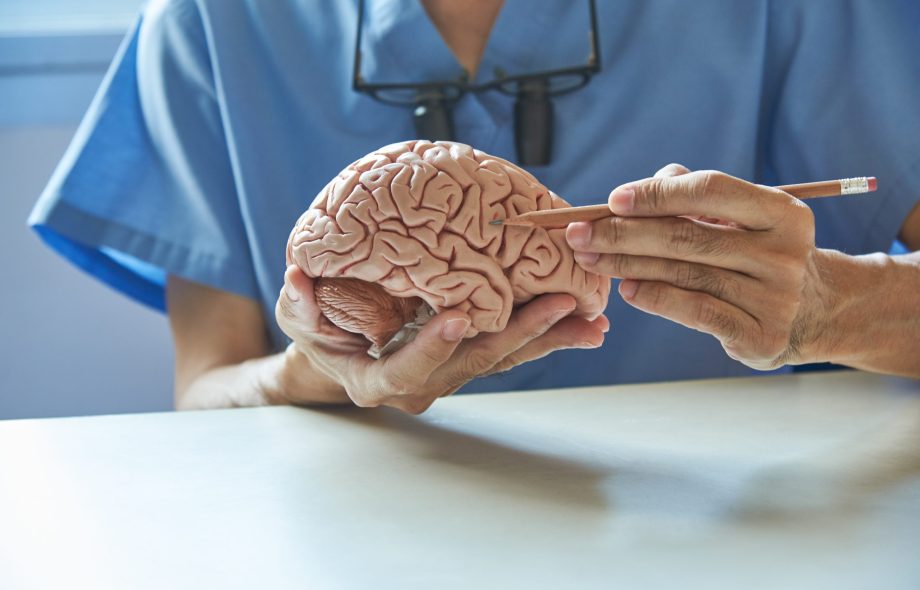Back pain is a common ailment that affects millions of people worldwide. It can range from a dull, constant ache to a sudden, sharp pain that makes it hard to move. Understanding the causes of back pain is crucial for prevention and effective treatment. Here, insights from the best neurologist in India help shed light on why back pain occurs and what can be done to manage it.
Common Causes of Back Pain
- Muscle or Ligament Strain
- Explanation: Lifting heavy objects, sudden movements, or awkward twists can strain muscles and ligaments in your back. Repeated heavy lifting or a sudden awkward movement can cause muscle strain, leading to back pain.
- Prevention: Proper lifting techniques, regular exercise, and maintaining a healthy weight can help prevent these strains.
- Herniated or Bulging Discs
- Explanation: Discs act as cushions between the vertebrae in your spine. When a disc herniates or bulges, it can press on nerves, causing pain.
- Symptoms: Pain, numbness, or weakness in the limbs, depending on which nerves are affected.
- Treatment: Physical therapy, medications, and in severe cases, surgery.
- Arthritis
- Explanation: Osteoarthritis can affect the lower back. In some cases, arthritis in the spine can lead to a narrowing of the space around the spinal cord, a condition called spinal stenosis.
- Symptoms: Pain and stiffness in the back, especially in the morning or after periods of inactivity.
- Management: Medications, physical therapy, and lifestyle changes.
- Osteoporosis
- Explanation: A condition that causes bones to become weak and brittle. It can lead to painful fractures in the spine.
- Symptoms: Sudden, severe pain, often from a minor fall or even a sneeze or cough.
- Prevention and Treatment: Calcium and vitamin D supplements, medications to strengthen bones, and weight-bearing exercises.
- Posture and Ergonomics
- Explanation: Poor posture, especially during long hours of sitting or standing, can strain the back muscles and spine.
- Prevention: Ergonomic furniture, regular breaks, and exercises to strengthen back and core muscles.
- Injuries and Accidents
- Explanation: Falls, car accidents, and sports injuries can cause acute back pain. Such injuries might involve fractures, strains, or sprains.
- Immediate Care: Rest, ice packs, and medical evaluation to rule out serious damage.
Less Common Causes of Back Pain
- Infections
- Explanation: Infections of the spine, such as osteomyelitis or discitis, can cause severe back pain.
- Symptoms: Fever, localized tenderness, and swelling.
- Treatment: Antibiotics and, in some cases, surgery.
- Cancer
- Explanation: Tumors in the spine or other parts of the back can press on nerves or weaken bones.
- Symptoms: Persistent pain that doesn’t go away with rest, weight loss, and other systemic symptoms.
- Treatment: Surgery, radiation, and chemotherapy.
- Kidney Stones or Infections
- Explanation: Problems with the kidneys can cause pain in the back, typically on one side.
- Symptoms: Sharp pain, fever, urinary symptoms.
- Diagnosis and Treatment: Imaging tests, medications, and in some cases, surgery.
- Endometriosis
- Explanation: A condition where tissue similar to the lining inside the uterus grows outside of it, causing pain that can radiate to the back.
- Symptoms: Pelvic pain, menstrual irregularities, and back pain.
- Management: Medications, hormonal therapy, and surgery.
Risk Factors for Back Pain
Understanding the risk factors for back pain can help in prevention:
- Age
- Insight: Back pain becomes more common with age, starting in the 30s or 40s.
- Lack of Exercise
- Insight: Weak, unused muscles in your back and abdomen might lead to back pain.
- Excess Weight
- Insight: Being overweight puts extra stress on your back.
- Diseases
- Insight: Some types of arthritis and cancer can contribute to back pain.
- Improper Lifting
- Insight: Using your back instead of your legs can lead to back pain.
- Psychological Conditions
- Insight: People prone to depression and anxiety appear to have a greater risk of back pain.
- Smoking
- Insight: Smokers have increased rates of back pain. This may occur because smoking prompts more coughing, which can lead to herniated discs. Smoking also can decrease blood flow to the spine and increase the risk of osteoporosis.
When to See a Doctor
While back pain is often manageable with self-care and over-the-counter treatments, certain symptoms warrant a visit to a healthcare professional:
- Persistent Pain: If back pain lasts more than a few weeks.
- Severe Pain: If the pain is severe and doesn’t improve with rest.
- Radiating Pain: If pain spreads down one or both legs, especially if it extends below the knee.
- Weakness or Numbness: If there is weakness, numbness, or tingling in one or both legs.
- Unexplained Weight Loss: If accompanied by weight loss.
- Bladder or Bowel Problems: If there are new bowel or bladder problems.
Treatment Options
- Medications
- Over-the-Counter Pain Relievers: Such as ibuprofen or acetaminophen.
- Muscle Relaxants: For severe pain that doesn’t improve with OTC medications.
- Topical Pain Relievers: Creams, salves, or patches.
- Physical Therapy
- Exercises: Specific exercises to strengthen back and abdominal muscles.
- Posture Training: To improve posture and avoid strain.
- Surgical and Other Procedures
- Injections: Cortisone injections to reduce inflammation.
- Surgery: For severe cases involving nerve compression or structural issues.
- Alternative Treatments
- Chiropractic Care: Adjustments to improve spine alignment.
- Acupuncture: To relieve pain by stimulating specific points on the body.
- Massage Therapy: To relieve muscle tension.
Conclusion
Back pain is a multifaceted issue with various potential causes ranging from muscle strain to serious medical conditions. Understanding these causes, recognizing the risk factors, and knowing when to seek professional help can significantly enhance the management and prevention of back pain. Consulting with the best neurologist in India can provide personalized insights and treatment options tailored to your specific condition, ensuring optimal care and relief from back pain.



 :
:









